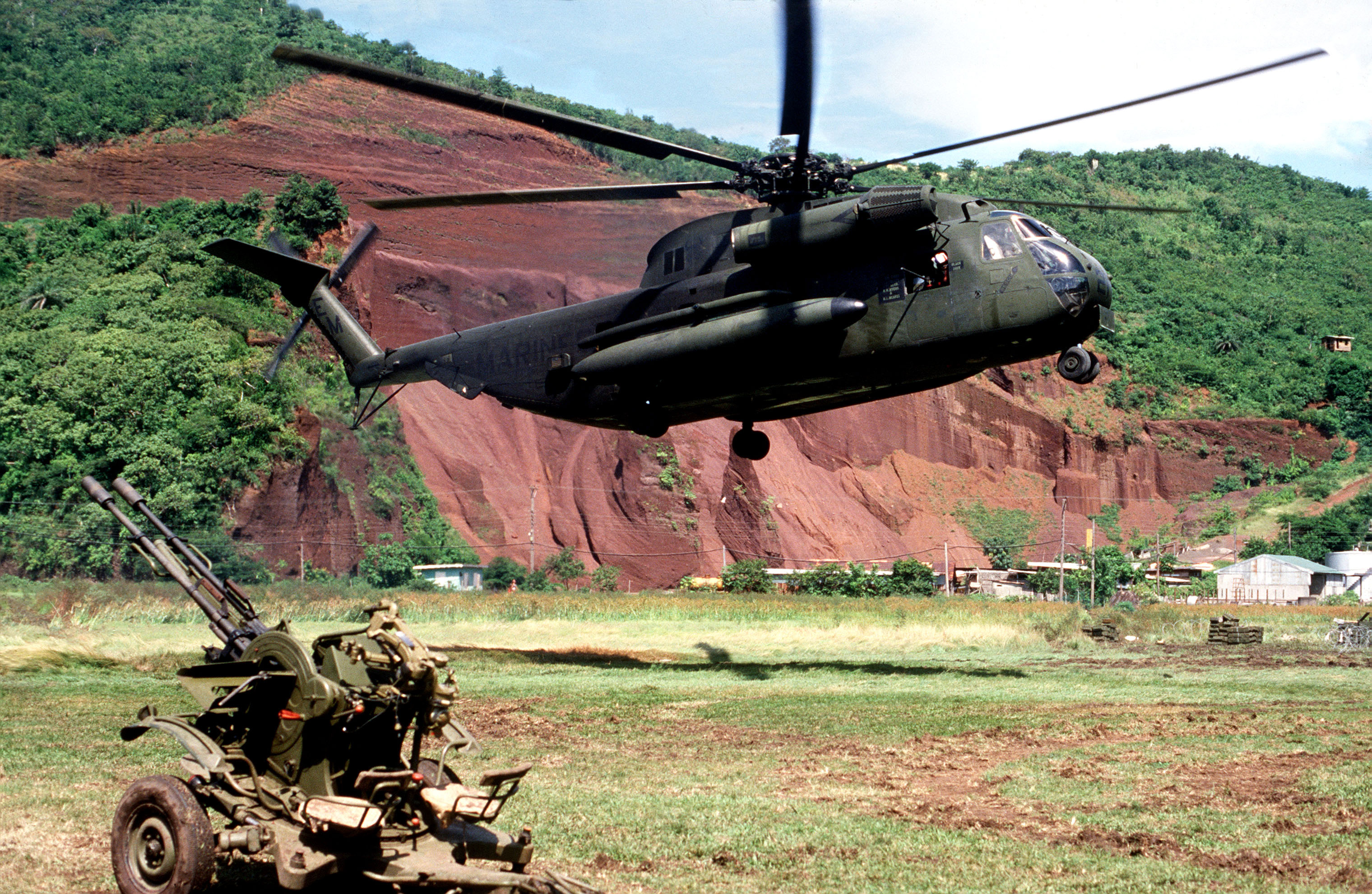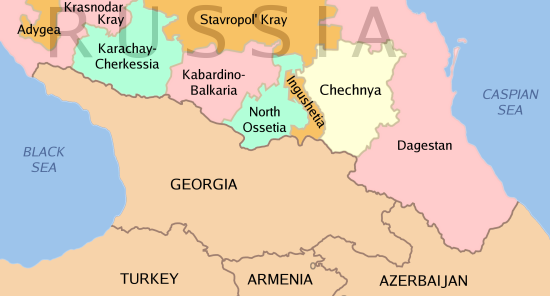|
ZU-23-2
The ZU-23-2, also known as ZU-23, is a Soviet towed 23×152mm anti-aircraft twin-barreled autocannon. ZU stands for ''Zenitnaya Ustanovka'' (Russian: Зенитная Установка) – anti-aircraft mount. The GRAU index is 2A13. Development history The ZU-23-2 was developed in the late 1950s. It was designed to engage low-flying targets at a range of 2.5 km as well as armoured vehicles at a range of two kilometres and for direct defence of troops and strategic locations against air assault usually conducted by helicopters and low-flying airplanes. In 1955, KBP presented the single-barrel ZU-1 and the twin-barrel ZU-14. While the former was eventually dropped, the ZU-14 was selected and, after some modifications, entered series production. In the Soviet Union, some 140,000 units were produced. The ZU-23 has also been produced under licence by Bulgaria, Poland, Egypt and the People's Republic of China. Development of this weapon into a self-propelled anti-aircraft ... [...More Info...] [...Related Items...] OR: [Wikipedia] [Google] [Baidu] |
KBP Instrument Design Bureau
JSC ''Konstruktorskoe Buro Priborostroeniya'' (KBP) ( Joint-Stock Company - Instrument Design Bureau) is one of the main enterprises in the field of Defense industry of Russia, Russian defense industry, based in Tula. It is engaged in designing high-precision weapon systems for the Army, the VMF and the VKS, as well as anti-air defense systems, high-rate-of-fire cannons and small arms, in addition to civilian products. Its full name goes as "Joint-Stock Company Instrument Design Bureau named after Academic A. G. Shipunov". Its shareholders include High Precision Systems, part of the State Corporation Rostec. The designing of high-precision weaponry is the priority of the KBP. The enterprise designs air-to-ground, ground-to-air and ground-to-ground weaponry. In addition to these, KBP also develops modern autocannons and grenade launchers. It also manufactures automatic, hand-held and under-slung grenade launchers, sniper rifles, submachine guns, pistols and revolvers for the law ... [...More Info...] [...Related Items...] OR: [Wikipedia] [Google] [Baidu] |
Russo-Georgian War
The August 2008 Russo-Georgian War, also known as the Russian invasion of Georgia,Occasionally, the war is also referred to by other names, such as the Five-Day War and August War. was a war waged against Georgia by the Russian Federation and the Russian-backed separatist regions of South Ossetia and Abkhazia. The fighting took place in the strategically important South Caucasus region. It is regarded as the first European war of the 21st century. Georgia declared its independence from the Soviet Union in April 1991, following a referendum during the dissolution of the Soviet Union. However, fighting (1991–92) between Georgia and Ossetian separatists resulted in parts of the former South Ossetian Autonomous Oblast being under the ''de facto'' control of Russian-backed but internationally unrecognised separatists. In 1992, a joint peacekeeping force of Georgian, Russian, and Ossetian troops was stationed in the territory. A similar stalemate developed in the region of Abkhazi ... [...More Info...] [...Related Items...] OR: [Wikipedia] [Google] [Baidu] |
United States Invasion Of Grenada
The United States and a coalition of Caribbean countries invaded the small island nation of Grenada, north of Venezuela, at dawn on 25 October 1983. Codenamed Operation Urgent Fury by the U.S. military, it resulted in military occupation within a few days. It was triggered by strife within the People's Revolutionary Government, which led to the house arrest and execution of the previous leader and second Prime Minister of Grenada, Maurice Bishop, and to the establishment of the Revolutionary Military Council, with Hudson Austin as chairman. Following the invasion there was an interim government appointed, and then general elections held in December 1984. The invading force consisted of the 1st and 2nd battalions of the U.S. Army's 75th Ranger Regiment, the 82nd Airborne Division, and elements of the former Rapid Deployment Force, U.S. Marines, U.S. Army Delta Force, Navy SEALs, and a small group Air Force TACPs from the 21st TASS Shaw AFB ancillary forces, totaling ... [...More Info...] [...Related Items...] OR: [Wikipedia] [Google] [Baidu] |
First Chechen War
The First Chechen War, also referred to as the First Russo-Chechen War, was a struggle for independence waged by the Chechen Republic of Ichkeria against the invading Russia, Russian Federation from 1994 to 1996. After a mutually agreed on treaty and terms, the Russians withdrew until they invaded again three years later, in the Second Chechen War of 1999–2000. During the dissolution of the Soviet Union in late 1991, Chechnya came under the control of a secessionist regime led by Dzhokhar Dudayev. Russian president Boris Yeltsin supported anti-Dudayev militias until 1994, when he launched a military operation to "establish constitutional order in Chechnya". Thousands of Chechen civilians were killed in aerial bombings and urban warfare before Battle of Grozny (1994–1995), Grozny was captured in March 1995, but a Russian victory was denied as efforts to establish control over the remaining lowlands and mountainous regions of Chechnya were met with fierce resistance and frequent ... [...More Info...] [...Related Items...] OR: [Wikipedia] [Google] [Baidu] |
Second Chechen War
Names The Second Chechen War is also known as the Second Chechen Campaign () or the Second Russian Invasion of Chechnya from the Chechens, Chechen insurgents' point of view.Федеральный закон № 5-ФЗ от 12 января 1995 (в редакции от 27 ноября 2002) "О ветеранах" Historical basis of the conflict Russian Empire Chechnya is an area in the North Caucasus, Northern Caucasus which has constantly fought against foreign rule, including the Ottoman Turks in the 15th century. The Russian Terek Cossacks, Terek Cossack Host was established in lowland Chechnya in 1577 by free Cossacks who were resettled from the Volga to the Terek River. In 1783, the Russian Empire and the Georgia (country), Georgian Kingdom of Kartli-Kakheti signed the Treaty of Georgievsk, under which Kartli-Kakheti became a Russian protectorate. To secure communications with Georgia (country), Georgia and other regions of the Transcaucasia, the Russian Empire ... [...More Info...] [...Related Items...] OR: [Wikipedia] [Google] [Baidu] |
War In Afghanistan (2001–2021)
The war in Afghanistan was a prolonged armed conflict lasting from 2001 to 2021. It began with United States invasion of Afghanistan, the invasion by a Participants in Operation Enduring Freedom, United States-led coalition under the name Operation Enduring Freedom in response to the September 11 attacks carried out by al-Qaeda. The Taliban and its allies were quickly expelled from major population centers by US-led forces supporting the anti-Taliban Northern Alliance, thus toppling the Taliban-ruled Islamic Emirate of Afghanistan (1996–2001), Islamic Emirate. Three years later the US-sponsored Islamic Republic of Afghanistan, Islamic Republic was established, but by then the Taliban had reorganized under their founder, Mullah Omar, and began Taliban insurgency, a widespread insurgency against the new Afghan government and coalition forces. The conflict finally ended decades later as the 2021 Taliban offensive reestablished the Islamic Emirate. It was the List of the lengths ... [...More Info...] [...Related Items...] OR: [Wikipedia] [Google] [Baidu] |
South Lebanon Conflict (1985–2000)
The South Lebanon conflict was an armed conflict that took place in Israeli-occupied southern Lebanon from 1982 or 1985 until Israel's withdrawal in 2000. Hezbollah, along with other Shia Muslim and left-wing guerrillas, fought against Israel and its ally, the Catholic Christian-dominated South Lebanon Army (SLA)."Hezbollah makes explosive return: Israel's proxy militia under fire in south Lebanon" Charles Richards, ''''. 18 August 1993. Retrieved 15 August 2009. The SLA was supported militarily and logistically by ... [...More Info...] [...Related Items...] OR: [Wikipedia] [Google] [Baidu] |
2006 Lebanon War
The 2006 Lebanon War was a 34-day armed conflict in Lebanon, fought between Hezbollah and Israel. The war started on 12 July 2006, and continued until a United Nations-brokered ceasefire went into effect in the morning on 14 August 2006, though it formally ended on 8 September 2006 when Israel lifted its naval blockade of Lebanon. It marked the Israeli–Lebanese conflict, third Israeli invasion into Lebanon since 1978. After Israeli occupation of Southern Lebanon, Israel's withdrawal from southern Lebanon in 2000, Hezbollah aimed for the release of Lebanese citizens held in Israeli prisons. On 12 July 2006, Hezbollah 2006 Hezbollah cross-border raid, ambushed Israeli soldiers on the border, killing three and capturing two; a further five were killed during a failed Israeli rescue attempt. Hezbollah demanded an exchange of prisoners with Israel. Israel launched airstrikes and artillery fire on targets in Lebanon, attacking both Hezbollah military targets and Lebanese civilian i ... [...More Info...] [...Related Items...] OR: [Wikipedia] [Google] [Baidu] |
Soviet Union
The Union of Soviet Socialist Republics. (USSR), commonly known as the Soviet Union, was a List of former transcontinental countries#Since 1700, transcontinental country that spanned much of Eurasia from 1922 until Dissolution of the Soviet Union, it dissolved in 1991. During its existence, it was the list of countries and dependencies by area, largest country by area, extending across Time in Russia, eleven time zones and sharing Geography of the Soviet Union#Borders and neighbors, borders with twelve countries, and the List of countries and dependencies by population, third-most populous country. An overall successor to the Russian Empire, it was nominally organized as a federal union of Republics of the Soviet Union, national republics, the largest and most populous of which was the Russian SFSR. In practice, Government of the Soviet Union, its government and Economy of the Soviet Union, economy were Soviet-type economic planning, highly centralized. As a one-party state go ... [...More Info...] [...Related Items...] OR: [Wikipedia] [Google] [Baidu] |
Georgian Civil War
The Georgian Civil War ( ka, საქართველოს სამოქალაქო ომი, ''sakartvelos samokalako omi'') lasted from 1991 to 1993 in the South Caucasian country of Georgia. It began in December 1991 with the coup against the first democratically-elected President of Georgia, Zviad Gamsakhurdia, by the rebel factions of the Georgian National Guard and the Mkhedrioni paramilitary. It led to President Gamsakhurdia fleeing to neighboring Chechnya, and his subsequent insurgency and unsuccessful uprising to regain power in 1992–1993. Background Georgian independence and ethnic conflicts During the dissolution of the Soviet Union, an opposition movement in Georgia organized mass protests starting in 1988, culminating in a declaration of sovereignty in May 1990 and independence on April 9, 1991, which was recognized in December after the failed August Coup. Zviad Gamsakhurdia was elected President in May 1991. Meanwhile, ethnic minority sepa ... [...More Info...] [...Related Items...] OR: [Wikipedia] [Google] [Baidu] |
Sudanese Conflict In South Kordofan And Blue Nile
The Sudanese conflict in South Kordofan and Blue Nile was an armed conflict and insurgency in the Sudanese states of South Kordofan and Blue Nile (state), Blue Nile (known as the Two Areas) between the Sudanese Armed Forces (SAF) and the Sudan People's Liberation Movement–North (SPLM-N), a northern offshoot of the Sudan People's Liberation Movement (SPLM) in now neighbouring South Sudan. After some years of relative calm following the Comprehensive Peace Agreement, 2005 agreement which ended the second Sudanese civil war between the Sudanese government and SPLM rebels, fighting broke out again in the lead-up to South Sudan's independence on 9 July 2011, starting in South Kordofan on 5 June and spreading to the neighboring Blue Nile state in September. SPLM-N, splitting from newly independent SPLM, took up arms against the retained inclusion of the two southern states in Sudan with no popular consultation and against the lack of democratic elections. The conflict is intertwined wi ... [...More Info...] [...Related Items...] OR: [Wikipedia] [Google] [Baidu] |








